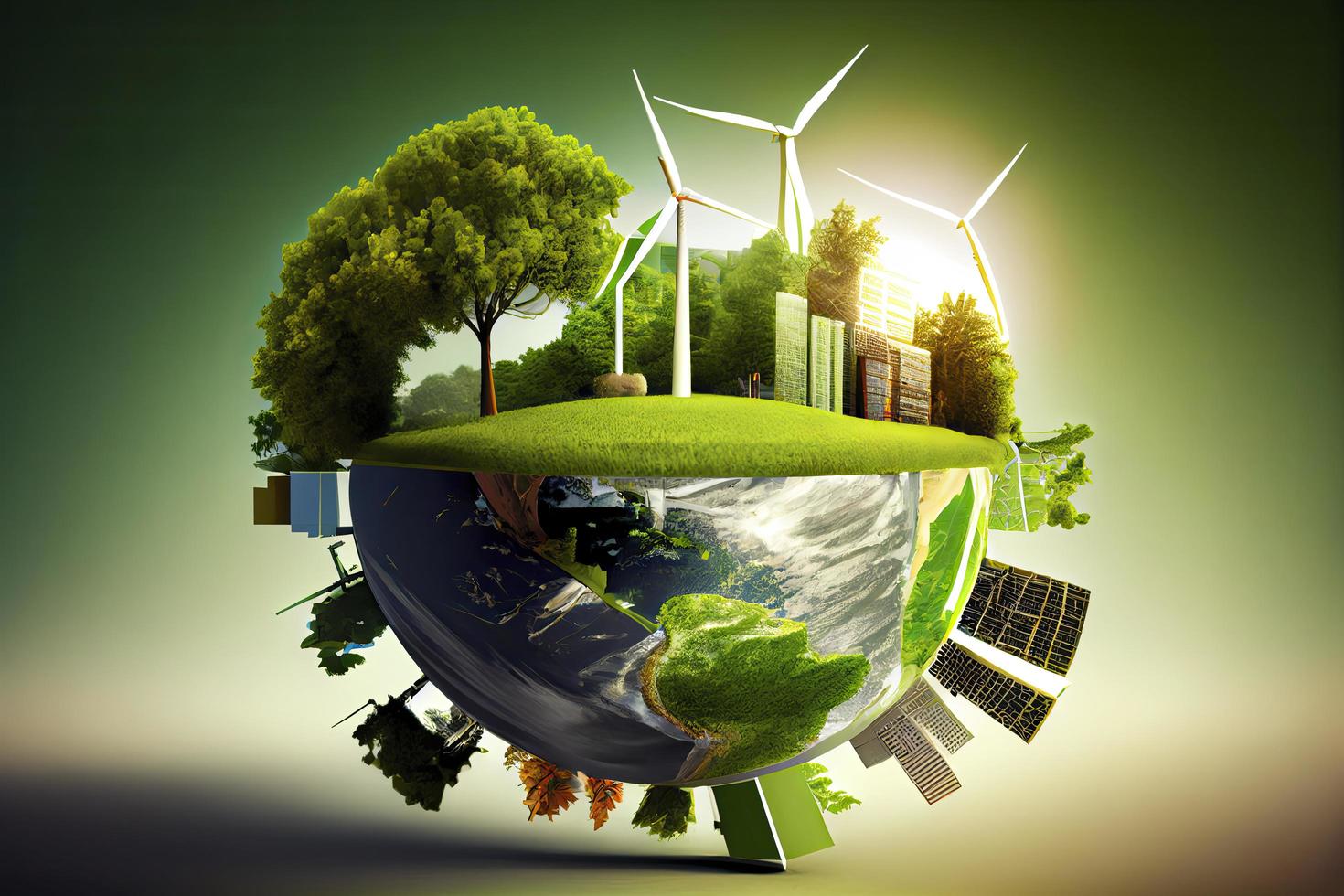Introduction to Climate Change and the Need for Innovation
Climate change is one of the biggest challenges facing humanity today. As temperatures rise and natural disasters become more frequent, the urgency to find innovative solutions has never been greater. The transportation sector, a significant contributor to greenhouse gas emissions, is at a crucial crossroads. Electric vehicles are emerging as a powerful tool in our fight against climate change, helping us move towards zero-emission targets while redefining how we think about mobility.
In this rapidly evolving landscape, companies like Tesla, BYD, and Rivian are leading the charge toward sustainable transport. Their commitment to green manufacturing and cutting-edge technology is transforming not just how we drive but also our entire approach to energy consumption. Join us on a journey through the world of electric vehicles as we explore their pivotal roles in electrifying transportation and combating climate change head-on.
The Rise of Electric Vehicles in Transportation
The transportation landscape is undergoing a significant transformation. Electric vehicles (EVs) are at the forefront of this change, rapidly gaining traction worldwide.
With growing awareness of climate issues, consumers are seeking sustainable alternatives to traditional gas-powered cars. This shift has led to innovations in EV technology and increased production capabilities.
Major automakers are investing heavily in electric vehicle development. The competition is fierce, pushing companies to enhance performance while reducing costs.
Government incentives also play a crucial role, encouraging consumers to make eco-friendly choices. As charging infrastructure expands, range anxiety becomes less of an obstacle for potential buyers.
People appreciate the benefits that come with electric driving — lower maintenance costs and zero emissions being chief among them. Public perception continues shifting toward viewing electric vehicles not just as options but as necessary solutions for a healthier planet.
Tesla’s Impact on the Industry and Its Innovative Technology
Tesla has redefined the automotive landscape by proving that electric vehicles can be both desirable and high-performing. The company’s approach to innovation stretches beyond just making cars; it’s about creating an ecosystem around sustainable energy.
With features like Autopilot, Tesla leads the charge in autonomous driving technology. This advancement not only enhances safety but also pushes other manufacturers to rethink their strategies.
The Gigafactories symbolize Tesla’s commitment to green manufacturing, where efficiency meets sustainability. These facilities produce batteries at scale, crucial for meeting zero-emission targets worldwide.
Moreover, Tesla’s Supercharger network alleviates range anxiety for drivers, making long-distance travel feasible in electric vehicles. Their influence has prompted traditional automakers to accelerate their own EV efforts, igniting a race towards electrification across the industry.
BYD’s Success in China and Its Electric Bus Fleet
BYD has emerged as a powerhouse in China’s electric vehicle landscape, particularly with its impressive electric bus fleet. Founded to combat air pollution, the company has transformed urban transport across many cities.
Their buses are not just zero-emission; they incorporate advanced technology for efficiency. This innovation extends beyond mere transportation, influencing public policies aimed at reducing fossil fuel reliance.
China’s massive market provides BYD an edge. The government’s push toward green manufacturing and sustainable transit fuels growth. Cities invest heavily in electric fleets, making BYD a preferred choice among local authorities.
With thousands of units deployed globally, BYD’s electric buses are reshaping how people think about public transport. They represent a shift towards cleaner options that meet modern demands while aligning with zero-emission targets set by governments worldwide.
Rivian’s Emergence in the Market with its Electric Truck and SUV
Rivian has burst onto the electric vehicle scene, capturing attention with its rugged electric trucks and SUVs. Their R1T pickup truck is designed for adventure, boasting impressive off-road capabilities and innovative features that set it apart from traditional gas-powered options.
The company’s commitment to sustainability shines through in every aspect of their vehicles. Rivian prioritizes eco-friendly materials and practices throughout the manufacturing process. This dedication extends to creating zero-emission targets that align with a greener future.
With standout technology like a large battery range and advanced driver assistance systems, Rivian appeals not just to environmentally conscious consumers but also tech enthusiasts. The blend of performance and sustainability positions them as serious competitors against established automotive giants.
As more people seek eco-friendly alternatives, Rivian addresses the growing demand for versatile electric vehicles tailored for both urban driving and outdoor escapades.
Advancements in Renewable Energy Sources for EV Charging
The growth of electric vehicles (EVs) is closely tied to advancements in renewable energy sources. Solar and wind power are leading the charge, making EV charging more sustainable than ever.
Solar panels installed on homes and commercial buildings can generate clean electricity directly used for charging. This not only reduces reliance on fossil fuels but also cuts down utility costs for EV owners.
Wind farms, with their large turbines harnessing gusty winds, contribute significantly to green energy production. These facilities provide a reliable source of electricity that can be channeled into the grid or stored in batteries for later use.
Innovative solutions like community solar projects allow multiple households to share resources, further expanding access to eco-friendly charging options. As these technologies evolve, they promise a brighter future where electric vehicles run seamlessly on renewable energy.
Challenges Faced by the EV Industry and Potential Solutions
The electric vehicle (EV) industry faces several hurdles that can stunt its growth. One major challenge is the lack of charging infrastructure. Many potential buyers hesitate to switch from traditional vehicles due to concerns about finding convenient charging stations.
Battery technology also presents obstacles. Current batteries are expensive, heavy, and have limited range compared to gasoline engines. This makes it crucial for manufacturers to invest in research and development for more efficient alternatives.
Another issue is the sourcing of raw materials like lithium and cobalt. Mining these resources often raises ethical concerns related to labor practices and environmental degradation.
Governments play a vital role here; they can incentivize green manufacturing through subsidies or tax credits for companies adopting sustainable practices. Collaborations between automakers, tech firms, and governments could pave the way for innovative solutions that address both supply chain issues and consumer anxieties regarding EV adoption.
The Future of Transportation and Combating
The future of transportation is on the brink of a revolutionary shift. As electric vehicles (EVs) continue to gain traction, they hold the key to meeting zero-emission targets that are crucial for our planet’s health. With companies like Tesla, BYD, and Rivian leading the charge, innovation in green manufacturing practices plays a pivotal role in this transformation.
As battery technology advances and renewable energy sources become more accessible, we can expect EV charging stations to be powered by clean energy. This synergy will not only reduce carbon footprints but also enhance the overall sustainability of transportation systems worldwide.
While challenges remain—such as infrastructure development and consumer adoption—the potential solutions are within reach. Governments are increasingly backing initiatives that support electric vehicle adoption through incentives and investment in charging infrastructure. Public awareness campaigns can further educate individuals on the benefits of switching from traditional gasoline vehicles to greener alternatives.
What lies ahead is an eco-conscious landscape where electric vehicles dominate roads. The collaborative efforts between manufacturers, governments, and consumers will pave the way for cleaner air and healthier communities. As we move forward into this electrifying era of transport innovation, it’s clear that sustainable practices must guide us toward a brighter future for all.




